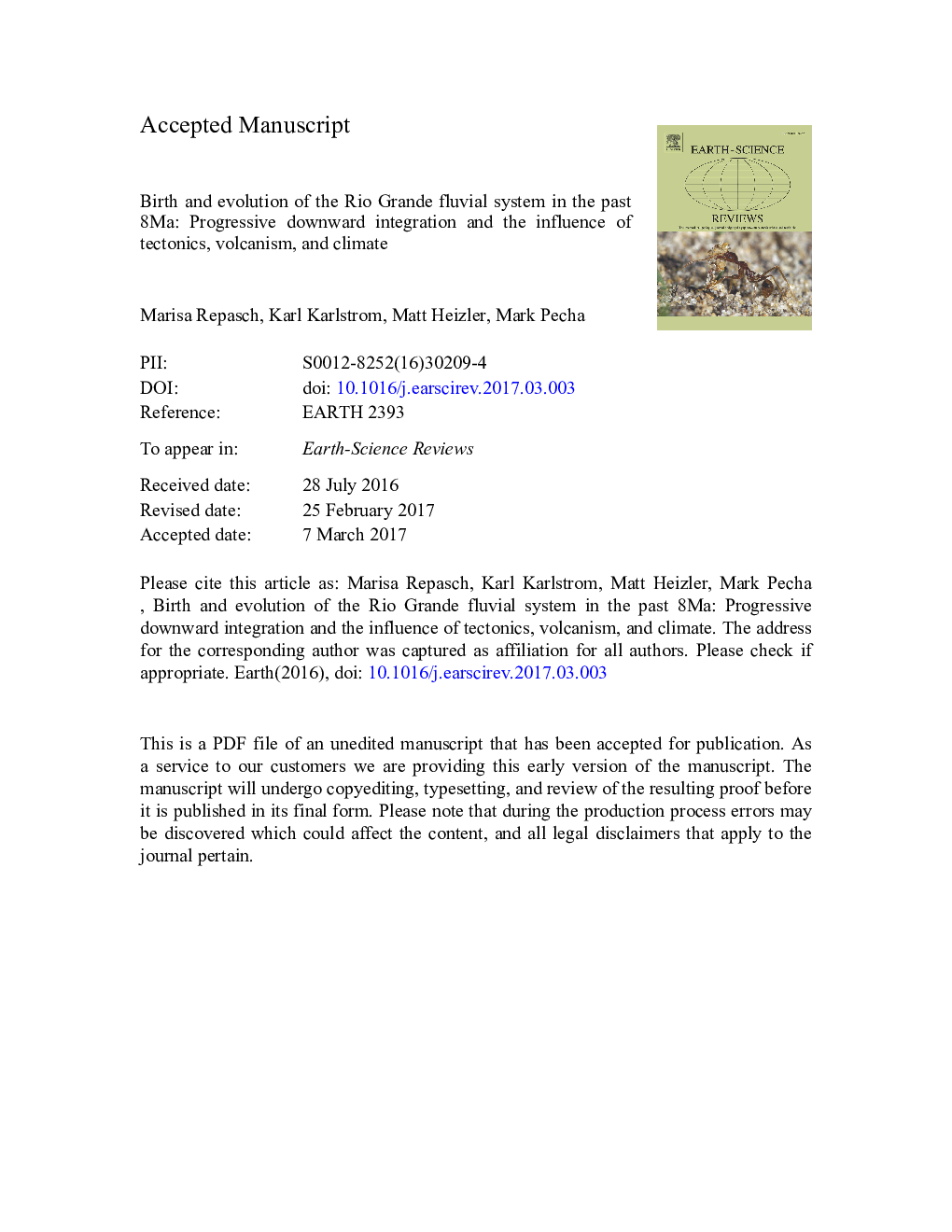| Article ID | Journal | Published Year | Pages | File Type |
|---|---|---|---|---|
| 5785113 | Earth-Science Reviews | 2017 | 158 Pages |
Abstract
Progressive downward integration of Rio Grande rift basins from 8 to 1Â Ma was facilitated by a combination of processes: increased river gradients in the upper basin due to construction of volcanic fields and potential epeirogenic uplift; increased discharge due to climate change events; waning rift extension that allowed aggradation to exceed subsidence; dampening of topographic divides between basins by aggradation; probable groundwater connectivity; and lake spillover events. Downward integration events may crudely correlate to climate change “events” at 6Â Ma (onset of the southwestern monsoon) and 2.6Â Ma (global change toward glacial-interglacial climate). Magmatic influences included the building of the 6-2.5Â Ma Taos Plateau volcanic field, construction of the 10 to 0Â Ma Jemez Mountains, and 6Â Ma to 0Â Ma Jemez lineament volcanism that was likely associated with mantle-driven surface uplift in a northeast-trending zone across northern New Mexico. River damming events were driven by volcanism in the northern Rio Grande rift, while basin spillover/groundwater sapping events were punctuated by a combination of pluvial climates and continued headwater uplift in the southern Rocky Mountains. Integration of the Rio Grande system to the Gulf of Mexico by ~Â 800Â ka was facilitated by headwater uplift as well as the onset of ~Â 100Â ka high-amplitude glacial-interglacial cycles at ~Â 900Â ka that provided higher discharge and bedrock incision rates during the Pleistocene. We conclude that magmatic and tectonic forcing dominated over the last ~Â 8Â Ma, but were amplified by climate change events to determine the fluvial evolution of the Rio Grande system.
Keywords
Related Topics
Physical Sciences and Engineering
Earth and Planetary Sciences
Geology
Authors
Marisa Repasch, Karl Karlstrom, Matt Heizler, Mark Pecha,
